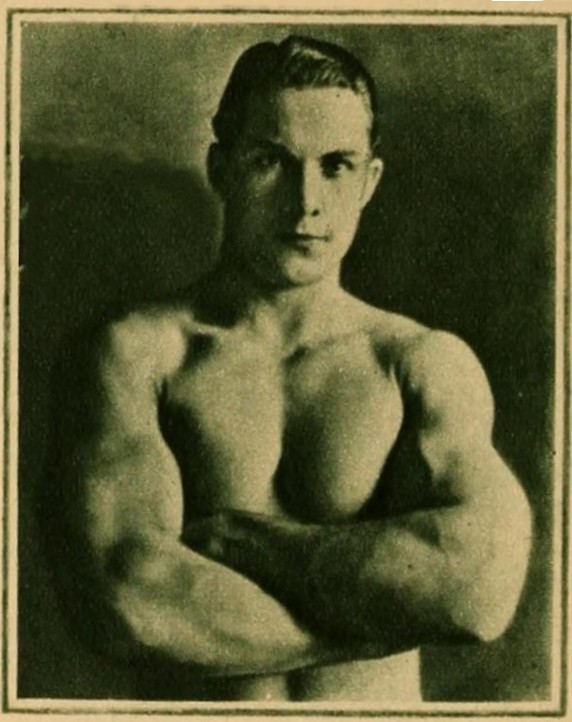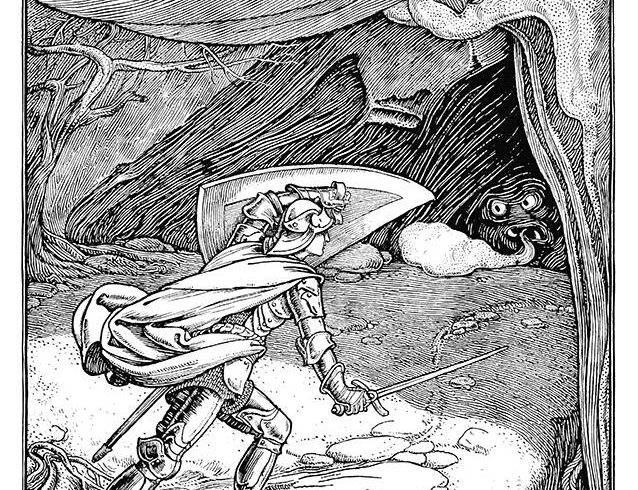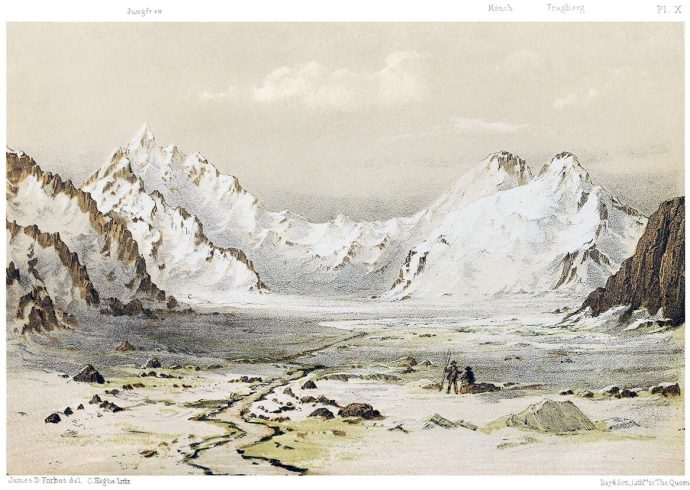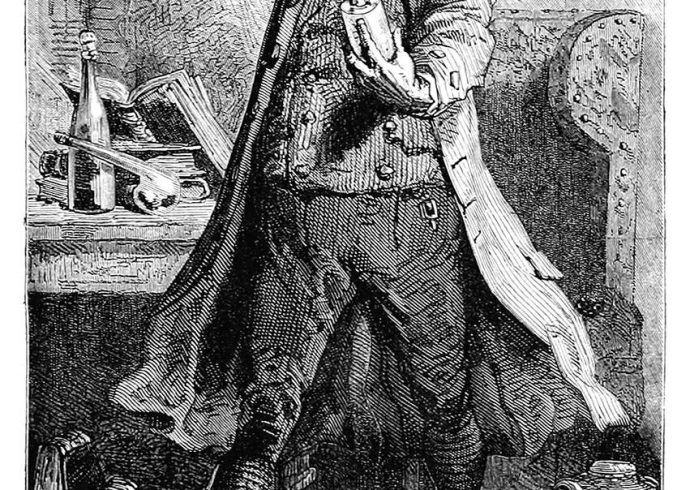
Many classic and silent film actors had some degree of athletic ability but a number of them were outstanding athletes, having won awards or titles in their chosen field of sport. These are actors who got their start in the field of competitive sports long before making it to Hollywood and in some cases, the European film studios. More often than not, these actors were given the opportunity to showcase their athletic talents on film, often performing dangerous stunts. It was not long before these outstanding athletes made a name for themselves, and became popular not just in America, but worldwide. Read more about these ten classic and silent film actors who received athletic awards in weightlifting, football, swimming, boxing, and wrestling.

10. Johnny Mack Brown
Born on September 1, 1904 in Dothan, Alabama, Johnny Mack Brown was 5’11” tall and 160 pounds with a powerful athletic physique, and by Hollywood standards, tall, dark and handsome. He was also a star halfback while a student at the University of Alabama. As halfback on his college football team, he won the NCAA Division 1-A national champions in 1925 and at the Rose Bowl that year, received Most Valuable Player honors. Johnny was such a powerful force on his team that he was soon nicknamed “The Dothan Antelope”. But his athletic career did not stop there; Johnny was inducted into the College Football Hall of Fame in 1957, the Alabama Sports Hall of Fame in 1969, and the Rose Bowl Hall of Fame in 2000.
Johnny aimed for a career in film though and made his debut in the silent film “Slide Kelly Slide” (1927), which was about baseball. The movie starred William Haines, but what is so highly unusual about Johnny’s role is that he played himself – as John Mack Brown. Johnny continued to appear in supporting roles in silent films such as “The Divine Woman” (1928) and “The Valiant” (1929), but finally made it to the top by 1929 when he received second-billing or first billing as male lead in silent films like “Coquette” (1929) and “Montana Moon” (1930), which also starred Joan Crawford. Johnny continued to play leading man through the 1930’s, starring in B-westerns for Universal such as “Chip of the Flying U” (1939), “Desperate Trails” (1939), and “Wild West Days” (1937). Johnny Mack Brown’s acting career as a leading man was over by the early 1950’s. He died on November 14, 1974 in Los Angeles at the age of 70.

9. Johnny Weissmuller
Best known for his portrayal of Tarzan in films of the 1940’s and 1950’s, Johnny Weissmuller was born in Freidorf, Austria-Hungary on June 2, 1904. After migrating with his parents and younger brother to the United States, Johnny soon discovered he had a natural talent for swimming, but it came as the result of his contracting polio as a child. His doctor advised him to take up swimming to counter the effects of polio, and young Johnny followed through. Johnny spent his spare time swimming when he was not busy doing schoolwork or helping do daily chores at home. It was not long before he developed the upper body strength and stamina for long-distance swimming. Standing 6’3” tall and 195 pounds, Johnny Weissmuller had the perfect physique for being a professional swimmer. He won 52 U.S. national championships and set over 50 world records in the freestyle and backstroke styles. Johnny made his film debut in “Glorifying the American Girl” (1929), an early sound movie about a Follies showgirl named Gloria Hughes which starred Mary Eaton. Johnny plays Adonis in the musical segment “Loveland” – a rather fitting name for him, since he was the spitting image of the Greek god himself.
In addition to a number of Tarzan movies – twelve in all to be exact – Johnny was also the leading man in a series of jungle adventure films as Jungle Jim: “Killer Ape” (1953) and “Valley of Head Hunters” (1953). Johnny Weissmuller died on January 20, 1984 at the age of 79 while in Acapulco, Mexico.

8. Steve Reeves
Probably one of the best-known bodybuilders of the 1940’s to become a leading man, Steve Reeves made his mark on the film industry in Italy. Born on January 21 in Glasgow, Montana, Steve was 6’1”, 216 pounds, and received his early muscle development through weightlifting at the gym and also in the Army, where he loaded boxcars and trucks. With his physique perfected, Steve started entering competitions for men, winning the titles “Mr. Pacific Coast” in 1946, “Mr. Western America” in 1947, “Mr. America” in 1947, “Mr. World” in 1948, and “Mr. Universe” in 1950. This success propelled him to Hollywood, where his desire was to become an actor. Unfortunately for Steve Reeves, the only roles available were of the beefcake bit part variety. All that changed for Steve when an Italian director by the name of Pietro Francisci saw him playing a detective in the Jane Powell movie “Athena” (1954) – and advised Steve to go to Italy to star in the title role “Hercules” (1958). Steve Reeves was born to play Greek heroic figures in the sword-and-sandal genre. He was finally a star, and seemed content to appear in word-and-sandal movies, which were of course shown at cinemas throughout the United States.
Steve Reeves made more than ten films portraying characters such as Hercules, Phillipides, and Aeneas. Some of his better known films are ‘Hercules Unchained” (1959), “The Giant of Marathon” (1959), and “The Trojan Horse” (1961). Even though he was not considered to be a great actor in any sense, Steve certainly had the looks and physique to be popular with a female audience, and the envy of guys who wanted to look and be like Mr. Universe. Steve Reeves died on May 1, 2000 in Escondido, California at the age of 74.

7. George O’Brien
George O’Brien was born on April 19, 1899 in San Francisco, California. He stood 5’11” and was nicknamed “The Chest” due to his marvelous boxing physique. A talented athlete, George made a name for himself as a boxer, and won the title of Heavyweight Boxing Champion while a member of the Pacific Fleet during World War 1. Once the war was over, George went into the film making business, and soon became a noted silent film star. His first starring role was as Henry Potter in “The Man Who Came Back” (1924), which led to more starring roles in films like “Sunrise” (1927), “Honor Bound” (1928), and “Masked Emotions” (1929), while under contract with Fox. After he made the transition to talkies, George continued to star in westerns like “The Lone Star Ranger” (1930), “The Last of the Duanes” (1930), “Riders of the Purple Sage” (1931), and “Mystery Ranch” (1932). “Triple Justice” (1940) was George’s last leading man role, but he continued to work in film. After a few more bit roles his career in the movies finally ended in 1964.
With the number of film roles slowly shrinking for George, he reenlisted in the navy when World War 2 broke out and became a recruit trainer. Once again he was assigned to the Pacific Theater, just like his time with the navy during World War 1, and received many medals for his outstanding service. After appearing as Major Mac Allshard in the John Wayne movie “She Wore a Yellow Ribbon” (1949), George again returned to the navy at the onset of the Korean War in 1950, and once again during the Vietnam War. Returning home from his unusually extensive military service for an actor, he settled down as a rancher in Oklahoma. George O’Brien died on September 4, 1985 in Broken Arrow, Oklahoma at the age of 86.

6. Fred Thomson
Born on February 26, 1890 in Pasadena, California, Fred Thomson was handsome and amiable, even though he originally intended on becoming a Presbyterian minister like his father was. While attending Occidental College in Los Angeles, Fred joined the football team. He then attended the Princeton Theological Seminary in Princeton, New Jersey, between 1910 and 1913, and continued to play football as well as be a member of the track-and-field team. Being 6’2” tall and 185 pounds, Fred Thomson was as athletic as they could possibly come. He was at the seminary the same years when he was a member of the Amateur Athletic Union. Fred competed in track and field, winning the All-Around Champion title granted by the AAU for his outstanding athletic ability for four years straight.
Fred Thomson made his debut in the silent film “The Love Light” (1921) which also starred Mary Pickford, one of the most popular – and highest paid – actresses of the 1910’s. He also starred in an early film serial, “The Eagle’s Talons” for Universal, in 1923. Only three of Fred’s silent films survive today, primarily in film archives: “Just Around the Corner” (1921), “The Love Light” (1921), and “Thundering Hoofs” (1924). Fred Thomson signed a contract with FBO studios in late 1924 and his first silent film appearance with this studio was “The Silent Stranger”, also released that year. From then on it was primarily westerns that Fred made, and he also performed his own stunts in the silent films he starred in. Fred Thomson made a total of thirty movies before he contracted tetanus from accidentally stepping on a nail while tending to his horses at a stable. Fred Thomson died at the young age of 38 on December 25, 1928 in Los Angeles, California.

5. Herman Brix
Born Harold Herman Brix on May 19, 1906 in Tacoma, Washington, he became a shot-put winner of the silver medal at the 1928 Olympics in Amsterdam. His father was a lumberjack who owned two logging camps, and as a youth, Herman put his muscles to work, which proved to be helpful when he took up shot-putting. Herman played football and was on the track-and-field team at University of Washington. Two years before Herman entered the Olympics, he played in the 1926 Rose Bowl in the position of tackle for the Washington Huskies, but he was up against a formidable opponent: halfback Johnny Mack Brown of the Alabama Crimson Tide.
At 6’3” tall and 220 pounds, Herman’s distinguishing good looks also earned him a five-decade long career in film and television. Bruce made his film debut in “Touchdown!” (1931) as a football player. Even though he was uncredited in this role – and his successive eleven bit roles remained uncredited, it allowed viewers to see his physique on film and recognize his potential as a muscle man. As Herman Brix, he was one of the actors who portrayed Tarzan on film, in “The New Adventures of Tarzan” in 1935. By 1938 he changed his name to Bruce Bennett, even though he continued to be billed as Herman Brix up to the end of the 1930’s, starring in movies like “Land of Fighting Men” (1938) and “Hawk of the Wilderness” (1938). In addition to taking on the occasional bit roles, Brix periodically starred in movies throughout the 1940’s such as “Atlantic Convoy” (1942) and “Smart Girls Don’t Talk” (1948). His acting career was sporadic during the 1960’s due to his lucrative career as a salesman for a vending machine company. He died at the age of 100 on February 24, 2007 in Santa Monica, CA.

4. Nat Pendleton
Born on August 8, 1895 in Davenport, Iowa, Nat Pendleton originally got into wrestling as a career, long before he became an actor. 6’ tall and 200 pounds, he was actively involved with wrestling while studying at Columbia University. Nat was good enough at wrestling to win the Eastern Intercollegiate Wrestling Association twice in 1914 and again in 1915. Nat was also talented enough to be part of the American wrestling team at the 1920 Summer Olympics in Antwerp, Belgium, where he won a Silver Medal for the heavyweight, freestyle division. In movies, Nat often portrayed lugs or henchmen on film but in reality, he was well read and bilingual. Fluent in Spanish, his first wife Juanita Alfonzo was from Puerto Rico; he also wrote poetry and played chess.
Nat Pendleton made his debut in the silent film “The Hoosier Schoolmaster” (1924). His additional movie appearances include: “The Laughing Lady” (1929), “The Tenderfoot” (1932), “The Great Ziegfeld” (1935), “Buck Privates” (1941), and “Scared to Death” (1947), which also starred Bela Lugosi. Nat even co-starred in “Gangway” (1937) with Jessie Mathews, who was one of Great Britain’s most popular actresses of the 1930’s. His most critically acclaimed movie role was as bodybuilder and strongman Eugen Sandow, in “At the Circus” (1939), which also starred the Marx Brothers. In addition to the many movies he made, Nat also appeared on Broadway in between silent films, appearing in “Naughty Cinderella” (1925), “The Grey Fox” (1928), and “My Girl Friday” (1929). Nat died on October 12, 1967 at the age of 72 in San Diego, California.

3. Buster Crabbe
Larry “Buster” Crabbe was tall, blond, and handsome, best known for his portrayals of Tarzan, Flash Gordon and Buck Rogers in film serials of the 1930’s. But it was his swimming prowess which enabled him to win the gold medal in the 1932 Summer Olympics for the 400-meter freestyle swimming competition. Born on February 7, 1908 in Oakland, California, Buster got his start swimming competitively when he attended the University of Southern California in Los Angeles. He was nominated the university’s first All-American swimmer in 1931 and held the National Collegiate Athletic Association (NCAA) freestyle title the same year. Buster’s first participation in the Olympics came in 1928 at Amsterdam, where he won the bronze medal for the 1,500 meter freestyle swim. It was not long before Hollywood came knocking on Buster’s door though, after the press took note of his athletic ability and blond good looks. Buster Crabbe made his starring role film debut in “King of the Jungle” in 1933, followed by “Tarzan the Fearless” that year. After appearing in a number of support roles in movies of the mid-1930’s like “Hold ‘Em Yale” (1935), Buster was tapped by Universal to play Flash Gordon in the four-hour long serial of the same title in 1936. Needless to say, “Flash Gordon” has remained one of the most popular film serials of all time, and Buster Crabbe was born to play the comic-strip superhero. But that was not the end of the exciting cliffhangers for Buster, for once again Universal wanted him, this time, to play Buck Rogers, in another four-hour long serial. After continuing his film career with westerns ad television appearances, Buster Crabbe died on April 23, 1983 in Scottsdale, AZ at the age of 75.

2. Reg Park
Reginald Park Jr. is probably best known for being a sword-and-sandal leading man, but in America, he won the Mr. Universe titles in 1951, 1958, and 1965. Born on June 7, 1928 in Yorkshire, England, young Reg followed in his father’s footsteps, weightlifting using the weights from Reginald Park Sr.’s barbell company. As an adult, Reg stood 6’ tall and weighed 250 pounds. He briefly played soccer with Leeds United in England before deciding to concentrate on bodybuilding. He moved to Johannesburg, South Africa in 1952 to be with his wife Mareon Isaacs, who was born there. Reg ran a chain of fitness clubs in South Africa prior to his becoming an actor.
It was in December 1960 when Reg was invited to Rome to appear in two sword-and-sandal movies as Hercules, “Hercules Conquers Atlantis” (1961) and “Hercules in the Haunted World” (1961). Much to Reg Park’s delight, another of his starring role movies, “Samson in King Solomon’s Mines” (1964) was filmed in Italy and South Africa, right next to his home. Reg made only six movies in total, his last leading role being in “Hercules the Avenger” (1965). Yet his appearances in these sword-and-sandal movies made him very popular, his name coming up as often as Steve Reeves any time movies of this genre were made. It was not until 1990 when he made his very last film appearance, an uncredited bit role in “The Grifters” which starred Anjelica Huston and John Cusack. Arnold Schwarzenegger has said that he idolized Reg Park for his bodybuilding talent. Reg Park died on November 22, 2007 at the age of 79 in Johannesburg, South Africa.

1. Tom Tyler
Best known for his leading role as the superhero in “Adventures of Captain Marvel”, Tom Tyler was a champion weightlifter, having competed in the Amateur Athletic Union (AAU) of Southern California in 1925 only a few years after he arrived in Hollywood. Born on August 9, 1903 in Port Henry, New York, when Tom was not reading scripts for starring roles in FBO produced westerns, he was at the Los Angeles Athletic Club pumping iron. It was in August 1927 when he set a new weightlifting record, at the height of his silent film acting career. Tom Tyler clean and jerked 300 pounds at the AAU competition. Taking place at the Los Angeles Athletic Club – the first man to ever lift that many pounds. During the next year of 1928, Tom entered the Olympic trials in the field of weightlifting and was selected to be a member of the team, representing the United States. Even though the American weightlifting team was not sent to the 1928 Summer Olympics in Amsterdam, Tom’s achievements at the tryouts were as impressive as ever. Tom’s lifts were as follows: 230 pounds in the press lift, 230 pounds in the snatch lift, and 300 pounds in the clean and jerk lift. Added up, this was a total of 760 pounds, very impressive for the time period. Additionally, Tom picked up extra income modeling for Milo Barbell Company, the biggest manufacturer of weightlifting equipment in the 1920’s. Had the Mr. Universe contest existed back in the 1920’s (the competition was first held in 1948, organized by David Johnston, the editor of Strength and Health magazine), Tom Tyler certainly would have won.
In addition to playing Captain Marvel, Tom also portrayed The Phantom in the 1943 Columbia serial of the same name, countless westerns including the character Luke Plummer in “Stagecoach” (1938) and many others. He died on May 1, 1954 in Hamtramck, Michigan at the age of 50 due to complications from scleroderma.


